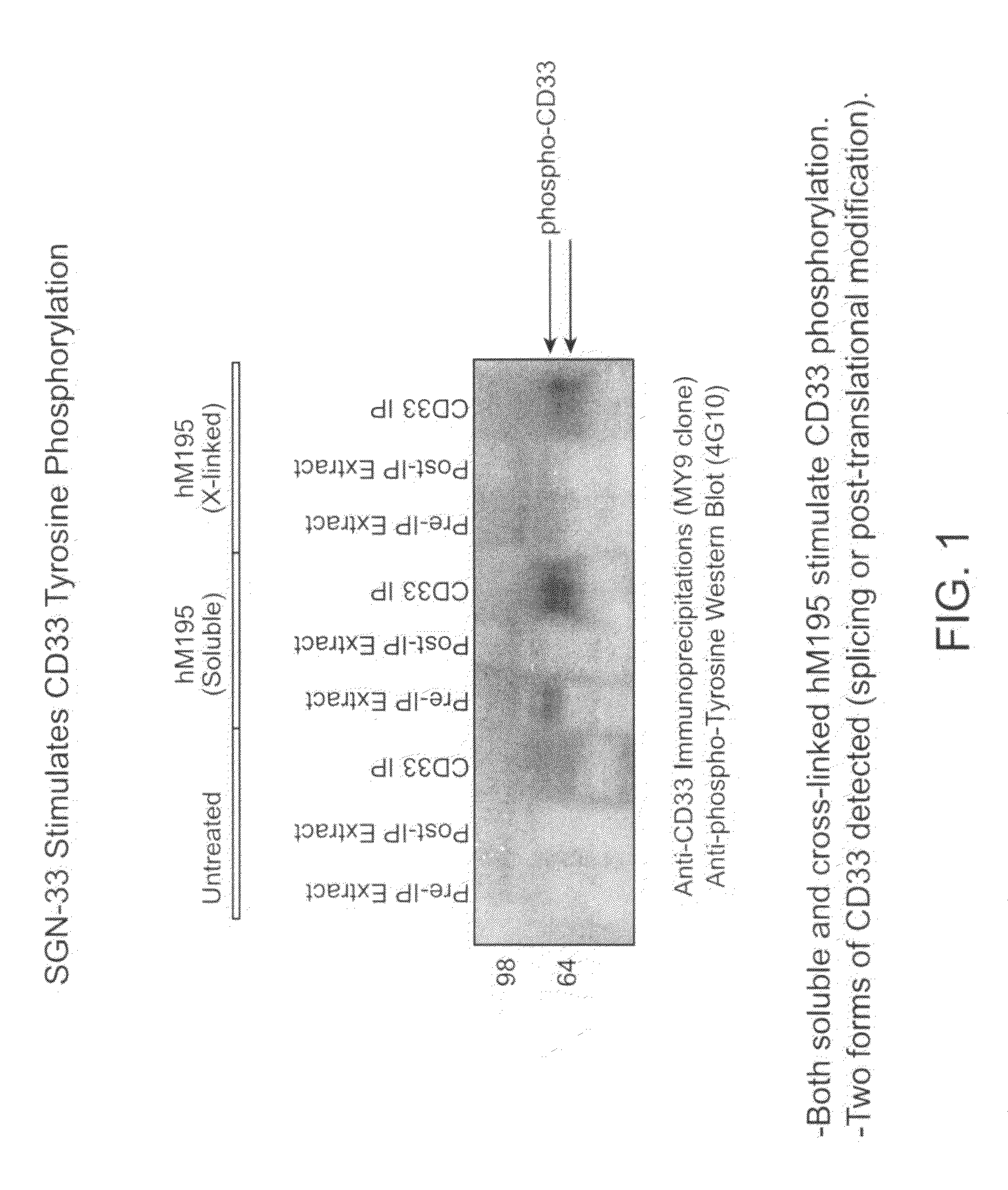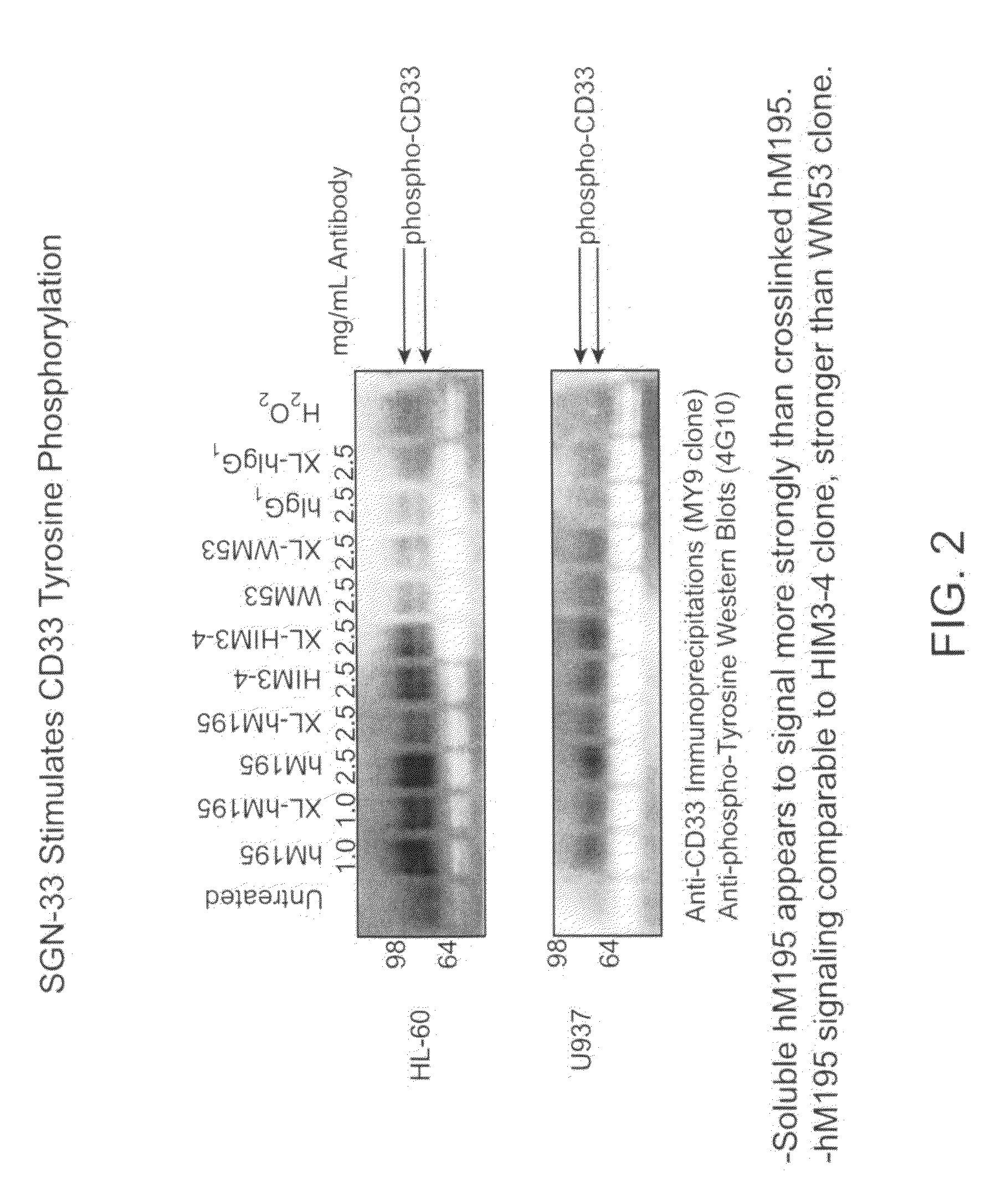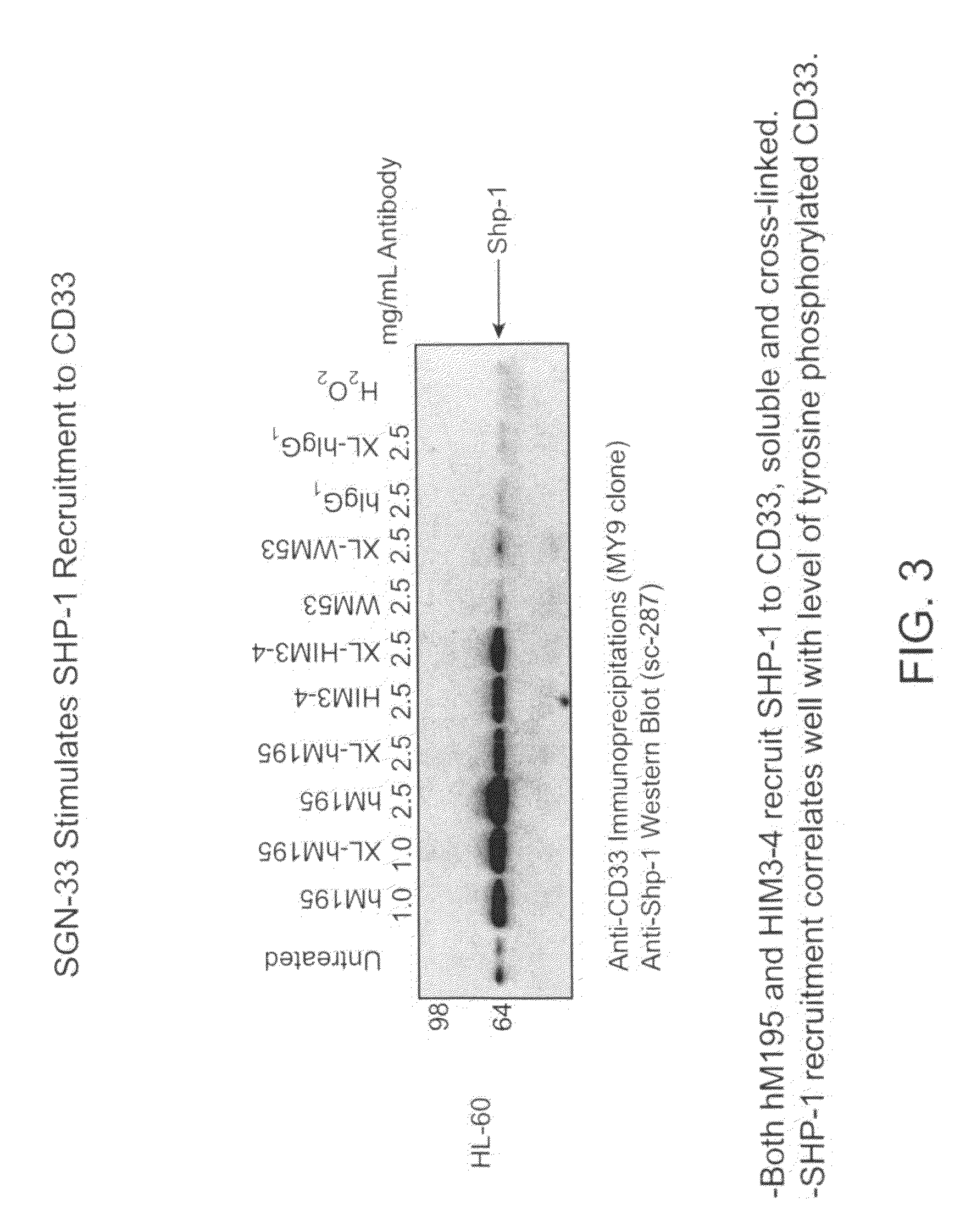Methods of treating neoplastic, autoimmune and inflammatory diseases
a technology of neoplastic, autoimmune and inflammatory diseases, applied in the direction of immunological disorders, drug compositions, antibody medical ingredients, etc., can solve the problems of large proportion of patients who achieve remission ultimately relapse, untreatable with such agents, etc., and achieve the effect of reducing the number of non-malignant effector or accessory cells, reducing the levels of one or more pro-inflammatory cytokines, chemokines or
- Summary
- Abstract
- Description
- Claims
- Application Information
AI Technical Summary
Benefits of technology
Problems solved by technology
Method used
Image
Examples
example 1
Signaling Induced by Anti-CD33 Antibody in CD33-Positive AML Lines
[0274]The purpose of this study was to determine if the anti-CD33 antibody, a humanized M195 antibody (also referred to as lintuzumab or SGN-33), exerts its biological activity directly by blocking cell proliferation, or indirectly through interactions with effector cells. The cell proliferation inhibitory activity of certain anti-CD33 antibodies has been associated with a signaling cascade that includes CD33 tyrosine phosphorylation, Syk kinase phosphorylation and recruitment of SHP phosphatases.
[0275]CD33-positive cell lines were treated with anti-CD33 antibodies (lintuzumab and certain commercially available antibodies). Cell extracts were prepared and CD33 was immunoprecipitated using an anti-CD33 antibody (MY9 clone; Beckman Coulter, Calif.). Western blotting was performed with an anti-phosphotyrosine antibody (4G10; Upstate Biotechnologies, Inc., Lake Placid, N.Y.). As shown in FIG. 1, exposure of the CD33-posit...
example 2
Effects of Anti-CD33 Antibody-Mediated CDC on CD33-Positive AML Lines
[0278]The purpose of this study was to determine whether the cytotoxic effects of an anti-CD33 antibody (HuM195) on AML cells could be enhanced by combination treatment with chemotherapeutic drugs. An MDR+, CD33-positive AML cell line (HEL 92.1.7) was either untreated or preincubated with the indicated concentrations of thalidomide or 5-azacytidine for two hours prior to exposure to the anti-CD33 Ab. Cytotoxic activity was measured using a complement-dependent cytotoxicity (CDC) activity. As shown in FIG. 4, HuM195 antibody increased lysis of AML cell lines in a dose-dependent manner. Preincubation with thalidomide or 5-azacytidine each enhanced the sensitivity of the MDR+, AML cell lines to HuM195-mediated CDC activity.
example 3
Effects of Anti-CD33 Antibody on Primary Macrophages
[0279]This study was performed to determine whether anti-CD33 antibodies have direct effects on CD33-positive macrophages in modulating the production of cytokines, chemokines and growth factors, which themselves may contribute to the growth and progression of tumors in vivo.
[0280]Primary human macrophages were generated from long-term cultures of freshly isolated human peripheral blood mononuclear cells (PBMCs; AllCells, Emeryville, Calif. or LifeBlood, Memphis, Tenn.). PBMCs were cultured in tissue culture flasks in RPMI 1640 medium containing glutamine (Invitrogen, Grand Island, N.Y.), 10% heat-inactivated FBS, and antibiotics for 3 to 4 hours. Non-adherent cells were removed by washing with PBS and the adherent cells were cultured in OptiMem-I medium (Invitrogen) containing 1% heat-inactivated FBS for 1 to 2 hours. The cells were washed with PBS and cultured for 10 to 14 days in X-VIVO-15 medium (Cambrex Bio Science, Walkersvil...
PUM
| Property | Measurement | Unit |
|---|---|---|
| body weight | aaaaa | aaaaa |
| body weight | aaaaa | aaaaa |
| weight | aaaaa | aaaaa |
Abstract
Description
Claims
Application Information
 Login to View More
Login to View More - R&D
- Intellectual Property
- Life Sciences
- Materials
- Tech Scout
- Unparalleled Data Quality
- Higher Quality Content
- 60% Fewer Hallucinations
Browse by: Latest US Patents, China's latest patents, Technical Efficacy Thesaurus, Application Domain, Technology Topic, Popular Technical Reports.
© 2025 PatSnap. All rights reserved.Legal|Privacy policy|Modern Slavery Act Transparency Statement|Sitemap|About US| Contact US: help@patsnap.com



